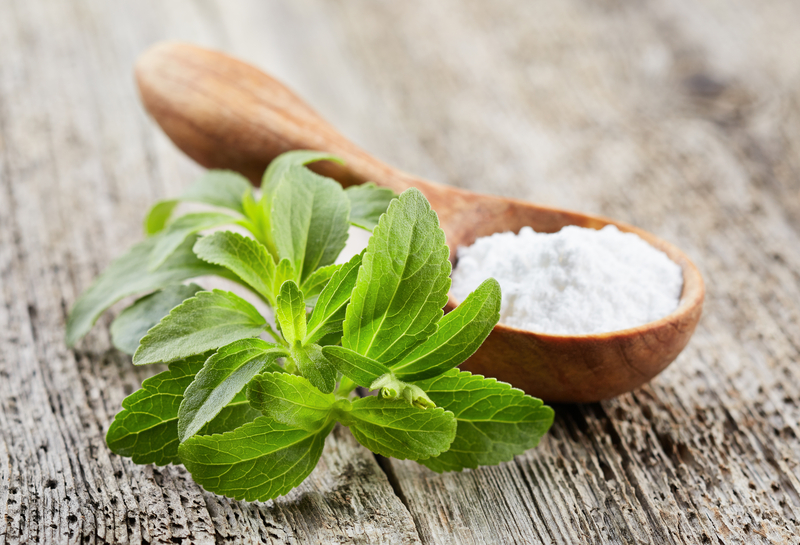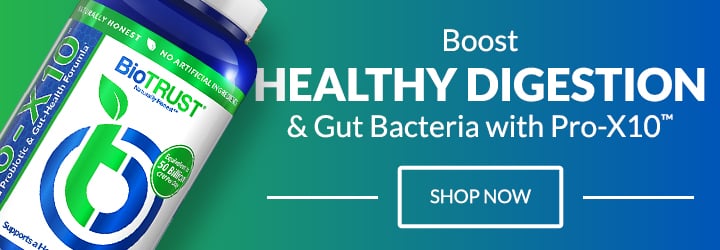Stevia vs. Splenda: Which Is Better for You?

Whether your goal is to lose weight, improve health, slow aging, decrease blood sugar swings, improve your oral health, and more, cutting sugar is likely high on your list of dietary changes. But let’s face it, most of us still want to put a little something into our morning coffee or add just a dash of sweetness to a glass of iced tea. So, if you want to use less sugar, what are the alternatives? Two of the most common options are Splenda and stevia. Both are easy to come by, but when it comes right down to it, which sweetener is better for you: Stevia vs. Splenda?
Both stevia and Splenda provide sweetness without altering blood sugar levels. They’re both found as ingredients in low-calorie, low-sugar products as well as alone, so they can easily be added to recipes. Yet the two sweeteners are also very different.
Stevia vs. Splenda: A Tale of Two Sweeteners
Stevia is a naturally derived sugar– and calorie-free sweetener from the leaves of the stevia plant. To make the powder, granulated, or liquid drops you are likely familiar with, the leaves are harvested, dried, and then steeped like tea in hot water before being dried and processed. In more “raw” products, you may even find leaf particles.
What makes stevia extract so sweet is its high content of glycosides. The more concentrated the product, the more glycosides. Common stevia brands include Stevia in the Raw, SweetLeaf Sweet Drops (in a variety of flavors), and Truvia (which is a combination of stevia with erythritol).
Splenda, on the other hand, was invented in 1998. This sweetener is also very low in calories. It is chemically made by taking sugar and replacing some of the atoms with chlorine. This is called sucrolose. It tastes as sweet as sugar, but the body is unable to digest it.
Before it arrives on the shelf, the sucrolose is then mixed with other digestible sweeteners like maltodextrin (typically made from corn) and then made into the common powdered, granulated, and liquid forms as the trademarked Splenda.
Splenda is quite common, in fact, you’re likely to find it in packets at restaurants alongside sugar and other artificial sweeteners. It’s often the preferred option as there is no artificial bitter aftertaste common with other non-calorie sweeteners. Yet it doesn’t have the calorie cost or affect in blood sugar levels as found with sugar.
Because Splenda contains other sweeteners, it is not zero-calorie like stevia. Yet it’s typically listed as calorie-free as it contains less than five calories per serving. Both stevia and Splenda offer minimal nutrients.
Here’s the nutrition comparison for stevia vs. Splenda:
Stevia Nutrition Facts:
Serving Size: 5 Drops
- Calories: 0
- Carbs: 0
- Fat: 0
- Protein: 0
- Potassium: 0
Splenda Nutrition Facts:
Serving Size: 1 gram powder or 1/16 tsp
- Calories: 3.36
- Carbs: .9g
- Fat: 0
- Protein: 0
- Potassium: 0
BREAKING: US Doctor: “Eating This Every Day Can Snap You into Ketosis”
Stevia vs. Splenda: The Differences
Both stevia and Splenda are used in many of the same ways for the same reasons: to sweeten foods and drinks without loading up on calories. They are also both FDA approved and are generally considered safe.
In addition, both stevia and Splenda have a slightly different taste and texture than sugar. Some people find the difference more noticeable than others. Yet both sweeteners can have a slight bitter taste, and some stevia may have a vanilla or licorice aftertaste. (This can vary depending on the brand.)
That said, both stevia vs. Splenda also have significant differences. For example:
Splenda is a lot sweeter than stevia. Stevia is around 200 times sweeter than sugar. On the other hand, Splenda is 450 to 650 times sweeter than sugar, so less can be used to achieve your desired sweetness level.
Stevia is also available in a number of different forms. It can be easily added to beverages, sauces, dips, salad dressings, and desserts. You can even make your own calorie-free sodas by adding flavored stevia drops to sparkling water. Some flavors available include root beer, vanilla cream, various berries, caramel, chocolate, lemonade, and many more. You can also just add dried stevia leaves to your usual tea to steep together.
Splenda: The Drawbacks
With such similarities, you may just think that stevia vs. Splenda all depends on convenience and preferences. However, there are some drawbacks with Splenda that may make you reconsider.
For example, the high-intensity sweetness of Splenda has been shown to boost cravings for sweets—leading you to potentially use more and more Splenda over time. 1 Some research has found that this can even lead to weight gain as people ate more at later meals to compensate for energy-saved with the artificially sweetened beverage. 2 This result was not found with natural sweeteners like stevia or monk fruit.
While Splenda can be used at lower temperatures, and doesn’t lose its sweetness during baking, it’s also not recommended as heating Splenda at high temperatures can create dangerous particles (e.g., potential carcinogens like chloropropanols).3 So, Splenda should only be used to sweeten beverages or other cold foods and never when cooking or baking at high heat.
Stevia, on the other hand, can be used pretty much anywhere you use sugar. Just remember to convert the serving size to half of how much sugar is called for. For example, if your recipe lists one cup of sugar, use no more than half a cup of Stevia. Stevia can be used at temperatures up to 392-degrees F (200 C).
Splenda also contains maltodextrin along with sucralose. And while sucralose hasn’t been shown to boost blood sugar levels, maltodextrin has. In fact, some research indicates that Splenda may cause blood sugar spikes in some individuals. 4
Finally, artificial sweeteners have been shown to interfere with gut bacteria. 5 This can lead to bloating and gas and may even have a laxative effect—especially when larger amounts are used.
Stevia vs. Splenda: A Wrap-Up
On the continuum from bad to better to best, it appears the order is sugar, Splenda, stevia. That said, while stevia is the better choice, no sweetener is perfect. Before adding any sweeteners to your food, consider if it really needs it or if you can cut back on the sweetener altogether. Then, on the occasions when you do want a little more sweetness in your life, use in moderation.






